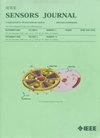Few-Shot Probabilistic RUL Prediction With Uncertainty Quantification of Slurry Pumps
IF 4.3
2区 综合性期刊
Q1 ENGINEERING, ELECTRICAL & ELECTRONIC
引用次数: 0
Abstract
Slurry pumps are crucial in the mining industry, as their performance and reliability directly affect the efficiency and safety of mining production systems. However, existing remaining useful life (RUL) prediction models face challenges due to the scarcity of degradation samples caused by the difficulty of obtaining degradation data in industrial settings, and their inability to provide prediction result confidence intervals (CIs). This article proposes a meta transformer with uncertainty quantification (MTUQ) based on an approximate Bayesian framework. The model enhances the capability to quickly adapt to new tasks in few-shot scenarios through a dual-loop meta-learning strategy, addressing the issue of sample sparsity. Additionally, random subnetwork sampling (RSNS) is proposed to achieve approximate Bayesian posterior distribution and combines Kernel density estimation (KDE) to quantify the model’s prediction uncertainty. Experimental results on the few-shot RUL prediction of slurry pumps in actual production scenarios demonstrate that MTUQ outperforms baseline methods in handling sparse samples and quantifying uncertainty, improving its prediction accuracy and reliability.求助全文
约1分钟内获得全文
求助全文
来源期刊

IEEE Sensors Journal
工程技术-工程:电子与电气
CiteScore
7.70
自引率
14.00%
发文量
2058
审稿时长
5.2 months
期刊介绍:
The fields of interest of the IEEE Sensors Journal are the theory, design , fabrication, manufacturing and applications of devices for sensing and transducing physical, chemical and biological phenomena, with emphasis on the electronics and physics aspect of sensors and integrated sensors-actuators. IEEE Sensors Journal deals with the following:
-Sensor Phenomenology, Modelling, and Evaluation
-Sensor Materials, Processing, and Fabrication
-Chemical and Gas Sensors
-Microfluidics and Biosensors
-Optical Sensors
-Physical Sensors: Temperature, Mechanical, Magnetic, and others
-Acoustic and Ultrasonic Sensors
-Sensor Packaging
-Sensor Networks
-Sensor Applications
-Sensor Systems: Signals, Processing, and Interfaces
-Actuators and Sensor Power Systems
-Sensor Signal Processing for high precision and stability (amplification, filtering, linearization, modulation/demodulation) and under harsh conditions (EMC, radiation, humidity, temperature); energy consumption/harvesting
-Sensor Data Processing (soft computing with sensor data, e.g., pattern recognition, machine learning, evolutionary computation; sensor data fusion, processing of wave e.g., electromagnetic and acoustic; and non-wave, e.g., chemical, gravity, particle, thermal, radiative and non-radiative sensor data, detection, estimation and classification based on sensor data)
-Sensors in Industrial Practice
 求助内容:
求助内容: 应助结果提醒方式:
应助结果提醒方式:


